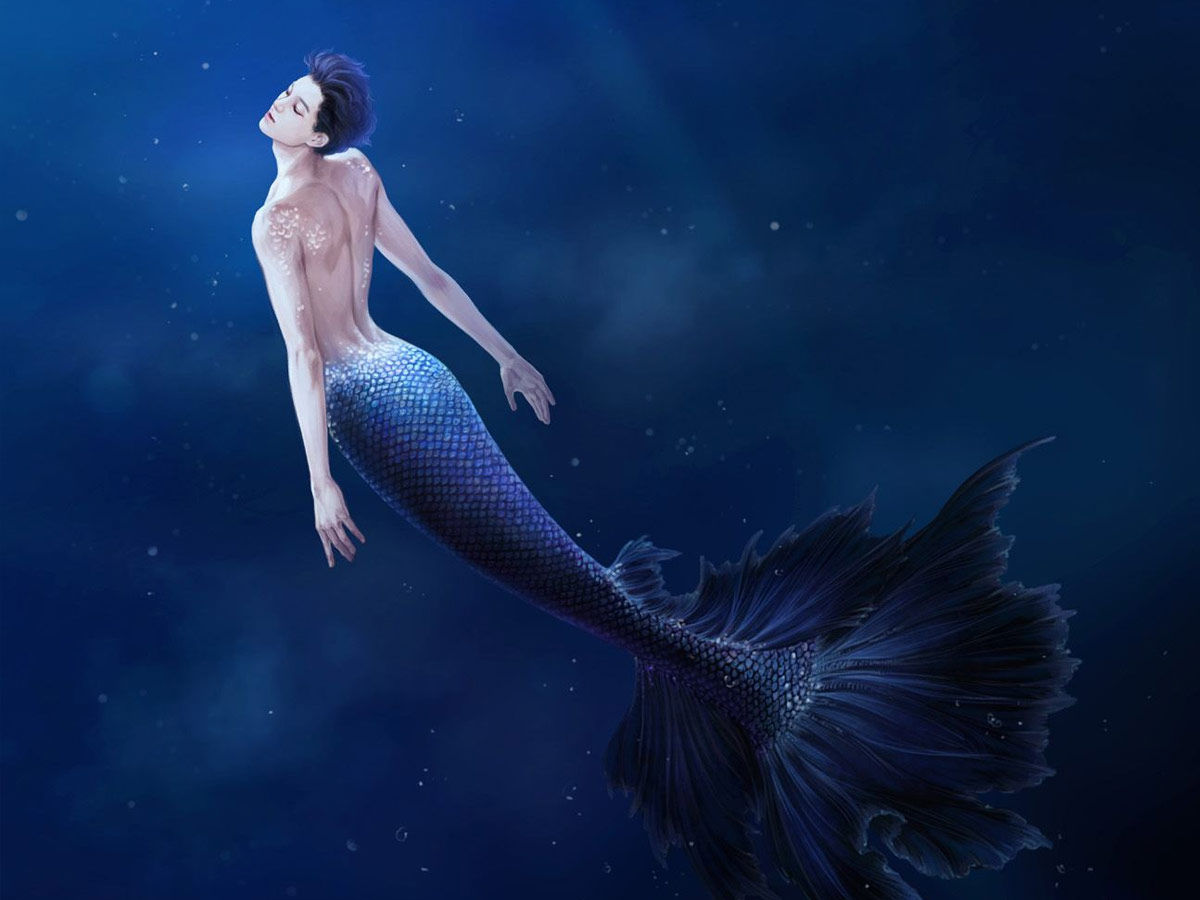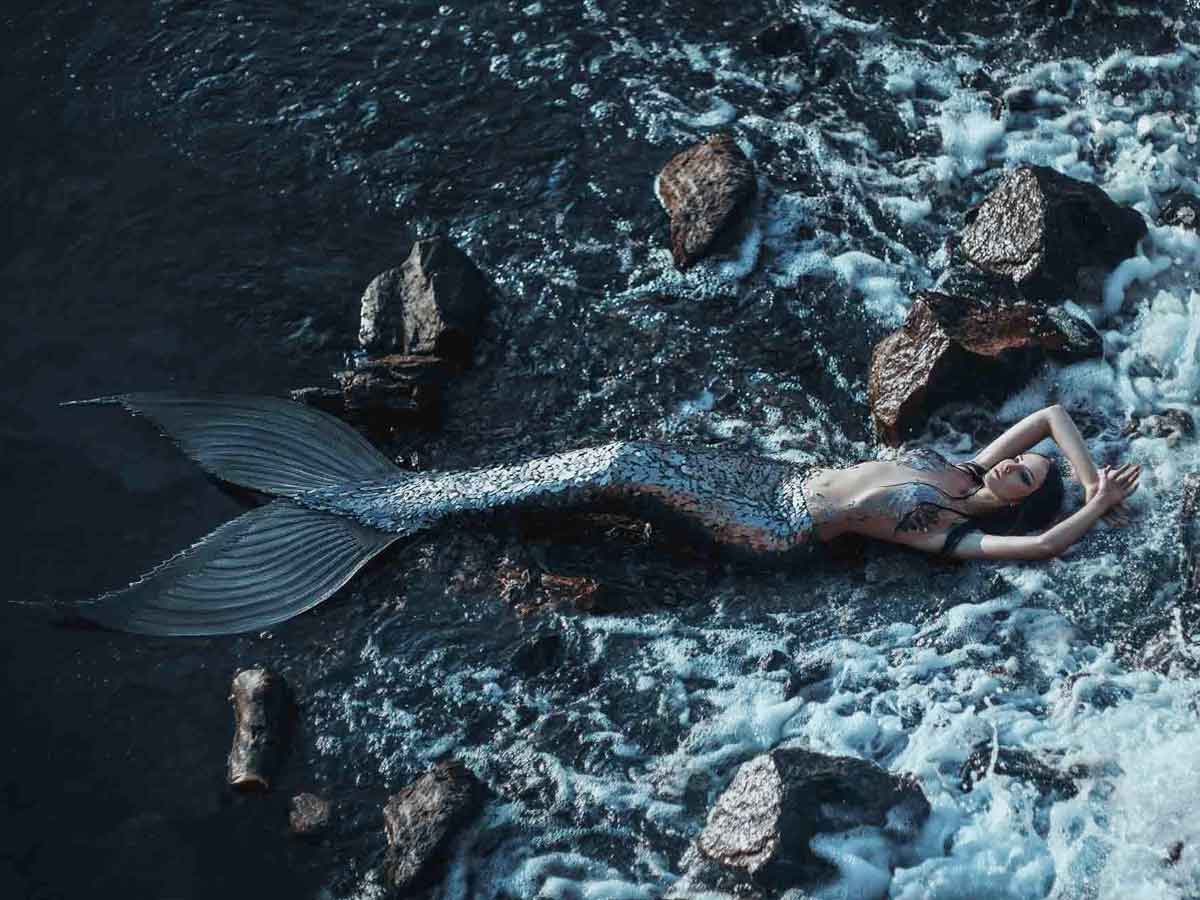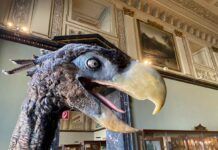In mythology, a mermaid is an underwater creature with a female human’s head and upper body and a fish’s tail which is evident from the folklore of many cultures worldwide like the Middle East, Europe, Asia, and Africa.
The goddess Atargatis turned herself into a mermaid in ancient Assyria out of the guilt of unintentionally killing her human boyfriend. Dangerous incidents such as floods, hurricanes, shipwrecks, and drownings are often associated with mermaids. They may be benevolent or beneficent in other folk traditions (or even within the same traditions), bestowing boons or falling in love with people.
The merman, also a common character in folklore and heraldry, is the masculine counterpart of the mermaid. Although the traditions and sightings of mermen are less widespread than those of mermaids, they are generally considered to coexist with their female counterparts. Males and females are also commonly referred to as merfolk or merpeople.

The idea of mermaids in the West may have been affected by the Sirens of Greek mythology, who in the Christian period were originally half-birdlike, but came to be represented as half-fishlike.
Sightings of manatees or related marine mammals may have been historic reports of mermaids, such as those recorded by Christopher Columbus during his discovery of the Caribbean. Though there is no proof that mermaids exist outside mythology, accounts continue to the present day of mermaid sightings.
In recent decades, mermaids have been a common topic for art and literature, such as in the literary fairy tale “The Little Mermaid” by Hans Christian Andersen (1836). In operas, drawings, novels, comics, animation, and live-action films, they have subsequently been represented.
Conceived as a half-bird and a half-woman, the sirens of Greek mythology (in particular the Odyssey) gradually changed to the picture of a fish-tailed woman. Perhaps this change began as early as the Hellenistic period, but in later Christian bestiaries, it is evident in mermaid-like depictions of “sirens”.

The mermaid also became attached to certain qualities of Homer’s sirens, such as the enticement of men and their beautiful song.
On the source of the mermaid, there are even naturalistic hypotheses, postulating that they originate from sightings of manatees, dugongs, or even seals.
In Mesopotamian artwork from the Old Babylonian Period onwards, depictions of entities with the tails of fish, but the upper bodies of humans appear. Usually, these figures are mermen, but sometimes mermaids appear. Kullu, meaning ‘fisherwoman, may have been the name for the mermaid figure. Such figures were used as defensive figures in Neo-Assyrian art and were seen both in monumental sculpture and in small, protective figurines.
The first recorded mermaid tales appeared in Assyria, c. 1000 BC. The goddess Atargatis, the mother of the Assyrian queen Semiramis, loved and accidentally killed a human who was a shepherd. Ashamed, she jumped into a lake and took the shape of a fish, but her divine beauty would not be hidden by the waters. She then took the shape of a mermaid, human above the waist, fish below, while Atargatis’s earliest depictions showed her as a fish with a human head and arm, similar to the god of Babylon, Ea. Under the Derketo name, the Greeks recognized Atargatis. Sometime before 546 BC, Anaximander, the Milesian philosopher, postulated that mankind evolved from an aquatic animal form.

There is a mermaid legend linked to Alexander the Great’s sister, but that legend is a modern mintage legend. The Hellenized Syrian writer Lucian of Samosata claimed in the second century AD that he saw a Phoenician portrayal of Derketo/Atargatis as a mermaid, even though the goddess was cast in the Holy City in a picture that was “entirely a woman” Due to the belief that Derketo assumes a fish-form, he also mentions a taboo against consuming fish in a wider region.
Established about 1078, the Norman chapel in Durham Castle has what is probably England’s oldest surviving artistic depiction of a mermaid. You can see it on the south-facing capital above one of the original pillars of Norman stone.
In British mythology, mermaids feature as unlucky omens, both foretelling and provoking catastrophe. Several versions of Sir Patrick Spens’ ballad show a mermaid speaking to the ships that we’re doomed. She tells them in some stories that they’re never going to see land again; in others, she says that they’re near shore, which they’re smart enough to know means the same thing. Mermaids may also be a warning that rough weather is coming.

Mermaids were often described as being able to swim up rivers to lakes of freshwater. In one tale, Lorntie’s Laird went to save a woman he thought was drowning near his house on a lake; he was pulled back by his servant, warning that it was a mermaid, and the mermaid screamed at them that she would have killed him if it weren’t for his servant. Yet mermaids could also be more useful, such as teaching people to cure certain diseases. Mermen, with little interest in humans, have been described as wilder and uglier than mermaids.




























